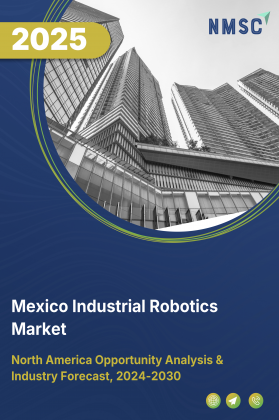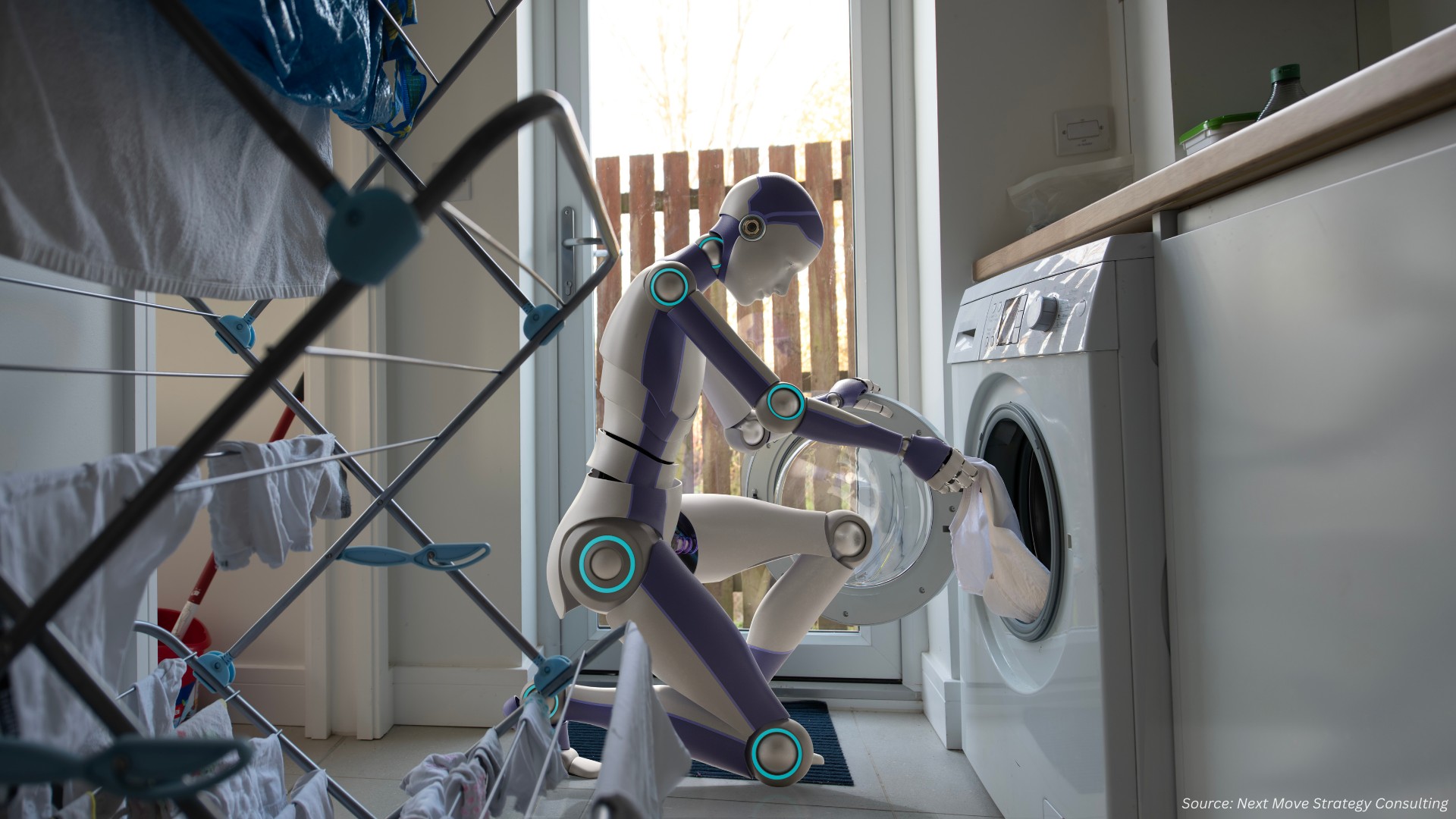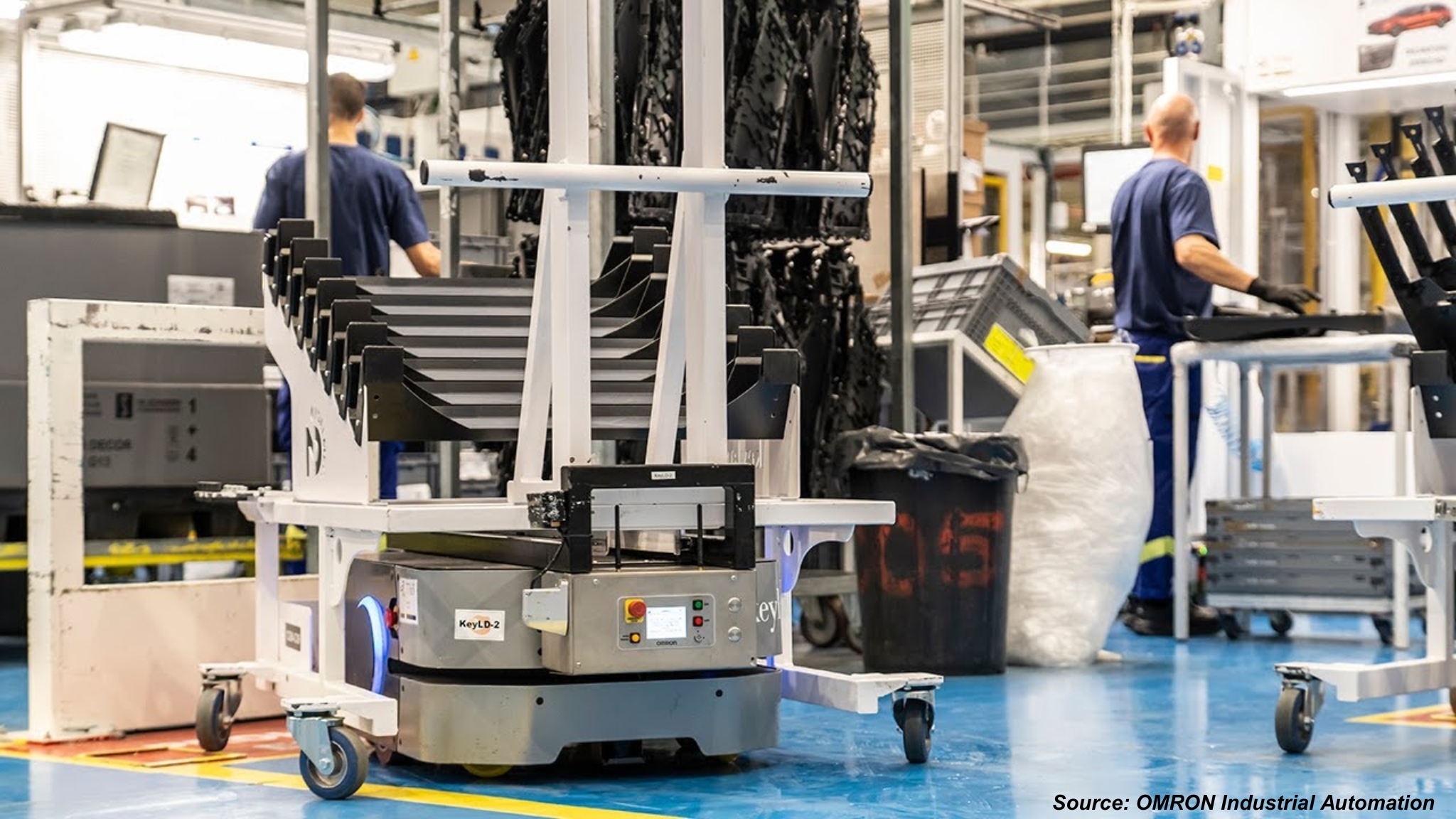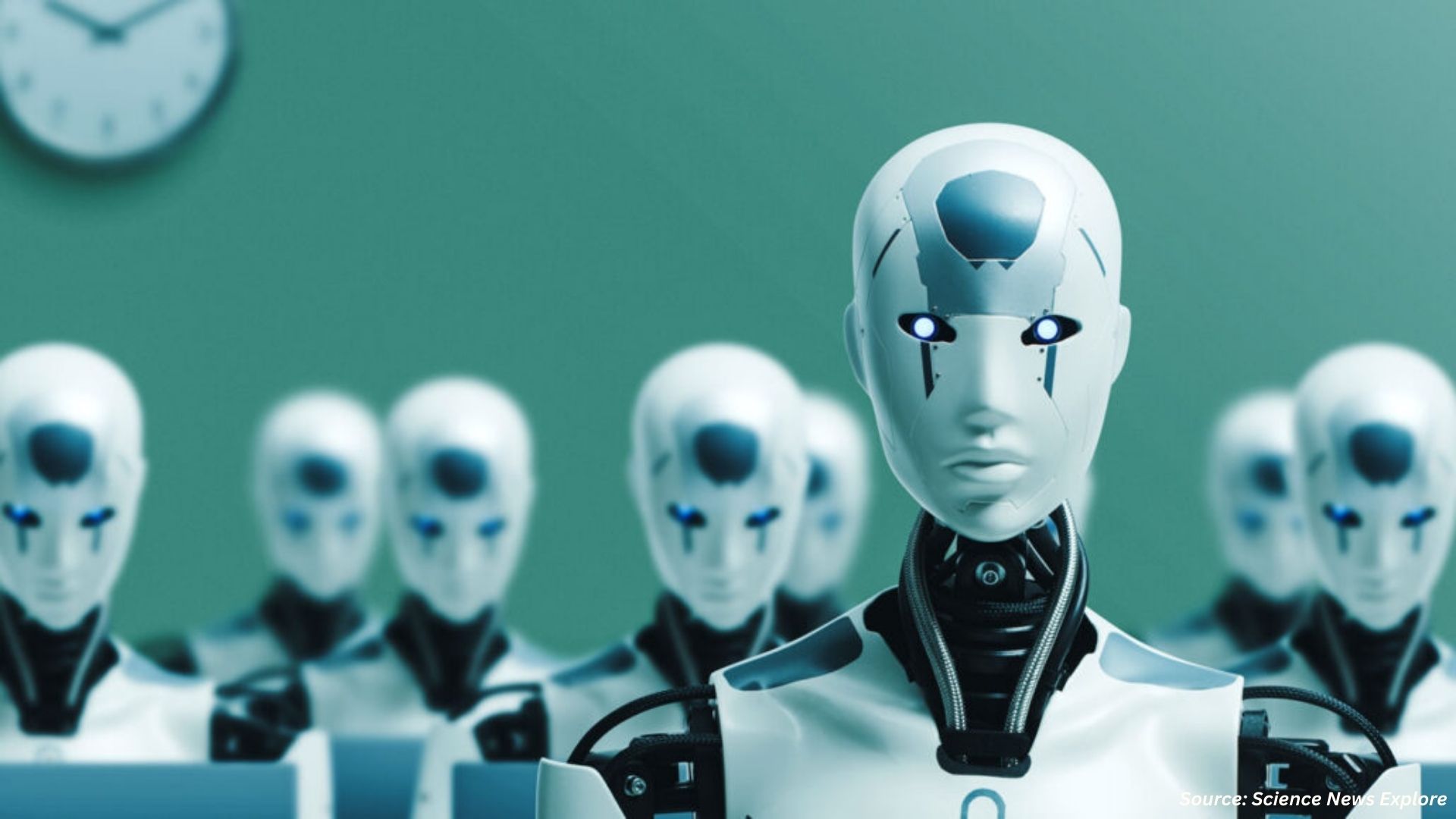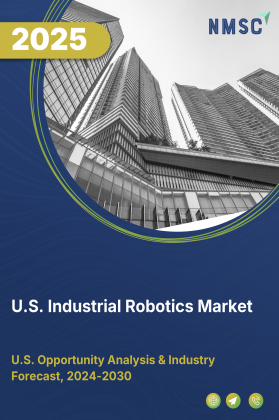
U.S. Industrial Robotics Market By Type (Articulated Robots, SCARA Robots, and Others), By Offering Hardware, Software, and Services), By Payload Capacity (≤ 100 KG, 101-200 KG, 201-500 KG and Others), By Mobility (Stationary, and Mobile Robots), By Mounting Type (Floor mounted, Wall-mounted, and Others), By Application (Material Handling, Assembling & Disassembling, and Others), By Industry Vertical (Automotive, and Others) – Opportunity Analysis and Industry Forecast, 2025–2030.
Industry: Semiconductor & Electronics | Publish Date: 24-Nov-2025 | No of Pages: 165 | No. of Tables: 192 | No. of Figures: 136 | Format: PDF | Report Code : SE3706
Industry Outlook
The U.S. Industrial Robotics Market size was valued at USD 4371 million in 2024 and is expected to reach USD 5219.0 million by 2025. Looking ahead, the industry is projected to expand significantly, reaching USD 9936.7 million by 2030, registering a CAGR of 13.7% from 2025 to 2030. In terms of volume, the market recorded 58 thousand units in 2024, with forecasts indicating growth to 74 thousand units by 2025 and further to 185 thousand units by 2030, reflecting a CAGR of 20.2% over the same period.
The industrial robotics market in the U.S. is witnessing strong growth driven by the expanding manufacturing sector and growing automation adoption. Rising labor costs, the need for greater productivity, and continuous technological innovation from leading players such as ABB, Fanuc, KUKA, and Yaskawa are key drivers. Vendor innovations, including AI and IoT-enabled collaborative and autonomous robots, are transforming operations across industries.
However, challenges such as system complexity, high investment costs, and a shortage of skilled labor, especially among small and mid-sized enterprises, limit broader adoption. Meanwhile, IoT integration is emerging as a major growth enabler, offering real-time monitoring, predictive maintenance, and data-driven optimization, thereby opening new opportunities for smarter and more efficient manufacturing in U.S.
Rapid Manufacturing Growth Driving Strong Demand for Industrial Robots in the U.S.
The rapid expansion of the manufacturing sector is significantly boosting the U.S. industrial robotics market trends. Industrial robots are essential to manage complex workflows, optimize production processes, and ensure compliance with regulatory standards. The growing need for operational efficiency and integration with advanced technologies is reinforcing industrial robotics adoption to enhance productivity and maintain global competitiveness.
Innovation by Top Companies Driving the U.S. Industrial Robotics Market Growth
The U.S. industrial robotics market is being driven by innovation from leading vendors such as ABB, Fanuc, KUKA, and Yaskawa. These companies are delivering advanced, flexible, and industry-specific robotic solutions that address evolving manufacturing demands. Collaborative robots, autonomous mobile robots, and other innovative solutions are enabling real-time process optimization, improved efficiency, and streamlined operations. Such vendor-led innovations are accelerating the adoption of robotics across multiple industries, further strengthening market growth.
Challenges of System Complexity and Resource Constraints Hindering Robotics Adoption
The integration of industrial robots with existing legacy equipment continues to pose a major challenge for manufacturers in the U.S., particularly small and mid-sized enterprises. High upfront investment, the need for skilled operators, and complex customization requirements across diverse production processes place significant strain on internal resources.
Limited awareness and understanding of advanced robotics solutions among some manufacturers further restrains adoption. These factors can slow deployment, restricting the speed and scale of market growth despite strong demand for robotics and automation solutions in the U.S.
IoT Integration Driving Advanced Robotics Capabilities and Market Opportunities
The integration of Internet of Things (IoT) technology with industrial robots is becoming a key growth driver in the U.S. industrial robotics market expansion, enabling real-time monitoring, predictive maintenance, and advanced operational control.
IoT-enabled robots allow manufacturers to track equipment performance, optimize production lines, and prevent downtime, significantly enhancing efficiency across sectors such as automotive, electronics, and logistics. This creates opportunities for data-driven manufacturing services, such as predictive maintenance and intelligent process optimization, helping manufacturers boost competitiveness and streamline operations.
Competitive Landscape
The U.S. industrial robotics industry is highly competitive, led by major players such as ABB Ltd., Fanuc Corporation, Yaskawa Electric Corporation, Mitsubishi Electric Corporation, KUKA AG, Kawasaki Heavy Industries, Nachi-Fujikoshi Corp., Denso Wave Inc., Panasonic Corporation, Shibaura Machine Co., Ltd, Omron Corporation, Seiko Epson Corporation, Staubli International AG, Universal Robots, and Doosan Robotics Inc.
These companies are driving innovation by introducing advanced AI- and IoT-enabled solutions, including collaborative robots and autonomous mobile robots, which are accelerating adoption across multiple sectors in the U.S., from automotive and electronics to logistics and general manufacturing.
U.S. Industrial Robotics Market Key Segments
By Type
-
Articulated Robots
-
SCARA Robots
-
Cylindrical Robots
-
Cartesian/Linear Robots
-
Parallel Robots
-
Collaborative Robots
-
Autonomous Mobile Robots (AMRs)
-
Automated Guided Vehicles (AGVs)
-
Other Robots
By Offering
-
Hardware
-
Software
-
Robot Control Software
-
Vision & Perception Software
-
Other Software
-
-
Services
By Payload Capacity
-
≤ 100 KG
-
101-200 KG
-
201-500 KG
-
501-1000 KG
-
1001-2000 KG
-
2001-5000KG
-
More than 5000 KG
By Mobility
-
Stationary Robots
-
Mobile Robots
By Mounting Type
-
Floor-mounted
-
Wall-mounted
-
Ceiling-mounted
-
Rail-mounted
By Application
-
Material Handling
-
Assembling & Disassembling
-
Processing
-
Cleanroom
-
Dispensing
-
Welding and Soldering
-
Pick and Place
-
Others
By Industry Vertical
-
Automotive
-
Semiconductor & Electronics
-
Plastic and Chemical Products
-
Metal and Machinery
-
Logistics
-
Food & Beverages
-
Healthcare & Pharmaceutical
-
Others
Key Players
-
Yaskawa Electric Corporation
-
Mitsubishi Electric Corporation
-
KUKA AG
-
Kawasaki Heavy Industries
-
Nachi-Fujikoshi Corp.
-
Denso Wave Inc.
-
Panasonic Corporation
-
Shibaura Machine Co., Ltd
-
Omron Corporation
-
Seiko Epson Corporation
-
Staubli International AG
-
Universal Robots
-
Doosan Robotics Inc.
Report Scope and Segmentation
|
Parameters |
Details |
|
Market Size in 2025 |
USD 5219.0 Million |
|
Revenue Forecast in 2030 |
USD 9936.7 Million |
|
Growth Rate |
CAGR of 13.7% from 2025 to 2030 |
|
Market Volume in 2025 |
74 thousand units |
|
Volume Forecast in 2030 |
185 thousand units |
|
Growth Rate |
CAGR of 20.2% from 2025 to 2030 |
|
Analysis Period |
2024–2030 |
|
Base Year Considered |
2024 |
|
Forecast Period |
2025–2030 |
|
Market Size Estimation |
Million (USD) |
|
Growth Factors |
|
|
Companies Profiled |
15 |
|
Market Share |
Available for 10 companies |
|
Customization Scope |
Free customization (equivalent up to 80 working hours of analysts) after purchase. Addition or alteration to country, regional, and segment scope. |
|
Pricing and Purchase Options |
Avail customized purchase options to meet your exact research needs. |

















 Speak to Our Analyst
Speak to Our Analyst





